Many people check out your online store, but you can’t get any sales. Adhering to several best practices for ecommerce websites may help, even though this issue is widespread. Statista anticipates $828.30 billion in ecommerce sales for 2022; that number might be much lower if users don’t get a favorable impression of your site within 50 ms.
To be successful and grow, an online business has to establish a solid first impression. You need to make sure that your ecommerce firm has a solid online presence that is founded on best practices, whether you are selling physical goods or intangibles like software or consulting services. With so much competition in ecommerce, it may not be easy to carve out a niche for yourself.
Every time you create an ecommerce store, whether it’s a whole new one or a redesigned version of an existing one, you face competition from not just local businesses but also global giants like Amazon. This is why it’s crucial to pay attention to every facet of your ecommerce store and to test and refine it constantly.
Best Practices For Your Ecommerce Store’s Success
1. Amp up your SEO
Prioritize improving your page’s on-site SEO first. On-page SEO is crucial for getting people to visit your ecommerce store. This word refers to tailoring individual web pages to get higher search engine results (SERPs) rankings. Many factors influence on-page SEO, including title tags, meta descriptions, header tags, and keyword density.
Here are a few recommendations to make your web pages easier to read:
- Ensure your title tags and meta descriptions are meaningful and include important keywords.
- Use relevant keywords in your headers and subheadings.
- Ensure that the sales pages for your products are optimized.
- Images must include alternative text.
- Make necessary changes to the overly keyworded or otherwise flawed language.
- Reduce the time it takes for your web pages to load.
- Do an audit to check for 3XX, 4XX, and 5XX status codes on your site.
- Most of these problems may be resolved in a few hours with free tools and a fundamental understanding of your website’s front and back ends.
One of the numerous cost-free alternatives is the Screaming Frog SEO Spider, which can crawl up to 500 pages of your site. After issues have been identified, it’s time to put in the work to fix them. You can check out the tools for creating high converting landing pages of your website.
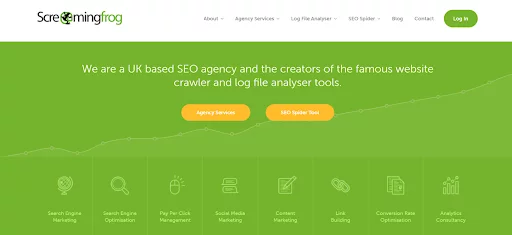
2. Make use of appealing product imagery
The average person absorbs visual information at 80 percent, making visuals extremely powerful. Experts in advertising agree that pictures are one of the most effective ways to catch people’s attention. According to internet bracketologist Jeff Bullas, Sixty-seven percent of online shoppers value product photos more highly than customer reviews or detailed product descriptions. That’s why picking images that will entice your target audience is crucial.
360-degree product photos are becoming increasingly popular in online retail. Whether you’re in the business of buying and selling homes or retailing clothing and electronics, this function is a must-have (real estate, cars).
3. Product demonstration videos
Recent research by Wyzowl found that 81% of marketers believe videos help directly increase sales and that 88% of consumers have been persuaded to purchase after watching a brand’s video. We can infer from these results that video demonstrations significantly influence customers’ purchasing decisions.
Zappos, the online shoe retailer known worldwide, was an early adopter of customer video testimonials. Using this tactic, Zappos increased sales by 6 percent to 30 percent in 2009. Zappos employees with hands-on experience with the products being promoted star in these videos rather than outside actors. After all, who better vouch for your wares than those who use them daily?
In addition to showing how the product works, videos can highlight its attractive packaging and any extra parts and accessories. Visitors to the Michael Kors website can examine wristwatches in detail from every angle and examine the watches’ presentation boxes and accompanying materials. This is a smart strategy for boosting sales, as many people buy wristwatches as presents and are curious about how they look once opened.
4. Declutter
Minimalist designs do not distract shoppers from their ultimate purpose, which is to find and buy the product(s) they came to the site for. Avoid adding extraneous components to your designs, like dazzling visuals, complex animations, or long menus that prevent consumers from executing the desired activities.
Customers’ actions should have a certain effect on your business. For example, you can browse for items, learn more about them, add them to your basket, and then check out and pay. It would be best to make it easy for your visitors to take the next step by not hiding your calls to action.
5. Efficient product search
While all up-to-date online stores feature a search bar, not all make it easy or fast to find what you’re looking for. Instead of having to scroll through irrelevant suggestions, users should be able to filter easily and sort search results according to their preferences. Check out how Adidas, a retailer with a wide selection of apparel and footwear, simplifies finding a desired item by allowing multiple search criteria to be entered simultaneously.
Using filters, customers can find what they need in a flash. Make sure your site’s search features are tailored to the products and services you provide for the best possible shopping experience. Filtering by brand, size, color, and occasion would be helpful if you sell clothing and shoes.
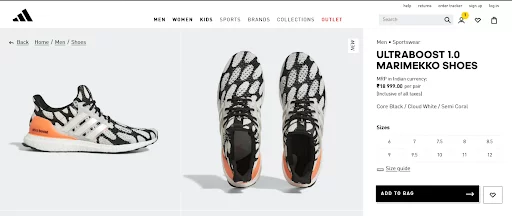
6. Maximize shopping comfort
Ensure that you have the most pleasant shopping experience possible. Reduce the number of clicks or taps required to place the order. Put your energy into making it easy for customers to buy. It’s essential that a customer can place an order for an item even if they don’t have an account. Such a thing would be helpful if…
- There must be a buy button on every page of the catalog
- An image of a shopping cart that can be clicked to proceed to the payment page
- Quick Checkout — a one-page checkout process wherein payment and shipping options are presented simultaneously
7. Make account creation optional
The survey by the Baymard Institute also found that the need to sign up for an account was the second most prevalent reason customers abandoned their carts. Consumers have little patience for sign-up processes and other types of registration. All they have to do is buy anything quickly.
Consumers may feel driven to create an account to take advantage of extra features like saving items to a wish list, providing feedback, joining a loyalty program, and accessing special discounts and offers. It, however, cannot be required to complete a transaction.
8. Offer multiple payment options
Each client has their preferred method of payment. Although certain consumers still use credit cards, newer alternatives like Apple Pay, Google Pay, and PayPal have swiftly become the norm. Since their chosen mode of payment is not accepted, many consumers want assistance completing their transactions. Here is some reference to choose the best payment gateways for your ecommerce store.
Depending on your location, a different set of payment methods may be made accessible to you. Almost half of the people (49%) use digital wallets (such as Google Pay or Apple Pay), while 21% use credit cards and 21% use debit cards, as shown in the Global Payments Report.
9. Enable customer reviews
Let’s be honest: public opinion is the true engine behind a successful business. According to a survey conducted by PowerReviews in 2021, nearly all consumers consulted reviews before making an online purchase, with almost all respondents (98%) citing the importance of reviews as a significant factor in their decision. Trust and loyalty can be cultivated in an online store by including features like product reviews, ratings, and user-submitted images. It’s also a good idea to enable unmoderated reviews to be published instantly on your site. This demonstrates your integrity to customers. And remember not to be sensitive to criticism. Furthermore, they can help your brand by illustrating the openness with which your company operates.

10. Personalize content
A website’s breadcrumbs trace a user’s steps from the homepage to the current location on the site. To what end are breadcrumbs useful? One of the most valuable features of breadcrumbs is that they make it possible to return to the homepage quickly. Secondly, breadcrumbs have been shown to decrease the percentage of “bounced” visitors. Breadcrumbs allow shoppers to swiftly navigate large catalogs and find what they’re looking for without getting lost.
H&M’s website uses breadcrumbs to indicate the user’s path to the current page.

11. Enable view history
Give them a chance to go back in time. As a result of being able to quickly and easily compare items, users are more inclined to make a buy. A user may soon go back to articles they’ve previously seen without doing any more digging. You can offer better suggestions and provide users with additional alternatives if you track what they’ve seen.
12. Provide product recommendations
Businesses are finding it increasingly challenging to produce and distribute content that customers really value. The fact that Amazon and Netflix are known for tailoring their services to each consumer has contributed to the company’s continued success.
The concept of suggesting complementary products to customers based on their previous purchases (i.e., “Customers who purchased this item also bought”) is not new. Still, innovative businesses like Amazon and Netflix have made this notion more refined and effective.
Take Amazon’s recommendation engine, for example; it displays appropriate goods based on the brands you’ve purchased from before. Use the site’s “Inspired by your purchase patterns” area to quickly examine items that could capture your interest. One way Amazon helps its customers feel at home is by highlighting products they have previously purchased.
Netflix‘s strategy of tailoring content to each viewer has also been proven successful. The onus is on streaming services to provide content that a large audience can enjoy. It avoids this by considering customer feedback when deciding which movies and TV shows to stream next. Children may watch programming designed just for them on the Kids channel.

13. Nurture customer loyalty
Although many people appreciate the time and energy savings afforded by online shopping, others have legitimate concerns about the reliability of the delivery options available.
According to the 2022 Consumer Trends Report by Jungle Scout, 66.7% of customers want free delivery on all online sales, and 80.1% want it if a certain threshold is achieved.
When shipping expenses are included in the total price, consumers are saved the added cost and inconvenience of making a separate payment upon receipt of their item.
Less hidden costs equal happier customers. Furthermore, you may define individual pricing for each available delivery method. Walmart offers a range of delivery options, from standard to express.
If you run a brick-and-mortar business, you may give your delivery service more flexibility by allowing customers to choose between in-store pickup and home delivery.
Lastly, one effective strategy for increasing average order value is to waive shipping costs beyond a certain purchase level. At Walmart, we offer several convenient delivery options.
14. Free product samples
One method to show your kindness is to provide free samples with every purchase. Selling food or cosmetics and giving out free samples is a win. French cosmetics giant Sephora uses free samples as a client acquisition and retention tool.
Customers may pick three things to sample at no cost rather than receiving a random assortment. Assisting customers in selecting samples increases the likelihood that they will utilize and react to those samples, which may increase sales. This is an excellent example of how tailoring services to each unique consumer may increase loyalty to a company.
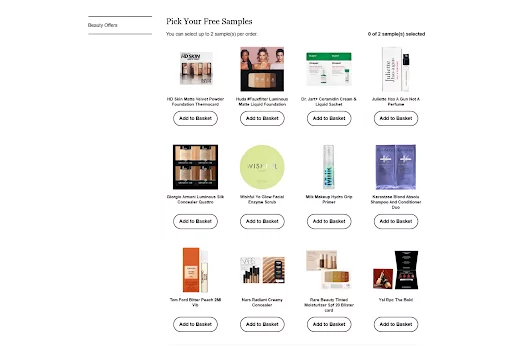
15. Loyalty programs
Repeated engagement with a brand is indicative of brand loyalty. Loyal customers have a positive impression of the company and its goods or services and return to buy more. Loyalty programs are recommended to boost repeat business and client engagement in the e-commerce sector.
Loyalty programs in the e-commerce sector increase lifetime value, decrease costs associated with client acquisition and generate recurring income, which is a genuine growth asset. Any good customer loyalty program aims to strengthen relationships with repeat purchasers. Apply a tiered structure like that of Walgreens. Customers may get 40,000 extra points for every $50 spent on cosmetics at Walgreens.

These points may be used for discounts on future purchases. It’s ideal for keeping things straight so that consumers can readily determine their points’ worth. In addition, hybrid reward schemes combine features from several loyalty models. Among the options is a point system with tiers of prizes based on the degree of accomplishment reached.
An innovative hybrid reward program is now available at Walmart, with the help of Murphy USA gas stations, Neighborhood Market, Sam’s Club, and Mastercard. Signing up for this loyalty club will provide discounts on everything from groceries to petrol and monthly prizes depending on how much you spend and what you like to buy—a warning: too many overlapping systems might cause consumer confusion.
16. Referral programs
Referral programs consistently rank toward the top in terms of marketing efficiency. Referral schemes are an excellent method of expanding your customer base via word of mouth. A customer referral program is a perfect way to increase loyalty among your current clients
Referral marketing mostly succeeds due to its targeted nature. A person’s knowledge of their social network is an asset in referral marketing. Here is where faith is required.
Customers are more likely to purchase when the source is recommended by someone they know and trusts, such as a friend or family member or a respected blogger. By leveraging these relationships, your brand’s message has the potential to go much broader and quicker than it would with traditional advertising methods.
You may earn points toward free Premium time or increased monthly upload quotas when you recommend a friend to Evernote, and your buddy will get a free Premium membership as well. The alternative is to create a referral scheme that works like Airbnb‘s and benefits both parties. You and your buddy may earn $25 when your referral makes their first booking via the program. A referral scheme should be a win-win for all parties involved.

-
Run on mobile
About three-quarters (79%) of smartphone users have purchased on the road during the previous six months. Companies must prioritize m-commerce this year to expand their consumer base and boost sales across all channels.
In 2023, the world of mobile commerce will see an increase in the prevalence of one-click buying, audio purchases, augmented reality, and advanced web applications.
(PWA).
-
Create Scarcity
Uniqueness is a strong selling point. What is uncommon is prized more than what is typical. And it’s critical to have such things on hand. One effective tactic for improving conversion rates is to make the product seem scarce or time-sensitive. It’s okay to give your customers time to mull over the results.
Embrace scarcity! There are numerous examples of people successfully employing lack. Instilling a sense of urgency in your customers is essential, so they take swift action. It’s a common practice among booking sites. The phrase “Selling Out!” is often featured prominently to encourage customers to make a quick purchase.
A variety of strategies can be used to create scarcity. Your online shop’s success depends on your ability to experiment and learn what works best. What follows are some suggestions for implementing this best practice:
- Few items left
- Valid only until stock lasts
- Last piece discount
There should be a balance between short-term goals and long-term goals when managing an online store. The following advice will assist you in doing so.
- Flash Sales
- Last Day Offers
- While Stocks Last
- Limited Release
-
Take notes on the campaigns from the previous year
The value of the online retail industry is projected to reach $7.3 trillion by 2025. Because of this, it is evident that organizations have been successful while facing many challenges. Thus, instead of reinventing the wheel for your 2023 peak season eCommerce approach, why not build on the successes of previous years?
In a worldwide epidemic, the first step is to unearth your contingency plans. These realizations will serve as a guide as you develop your plan further.
- Busy periods:
Review the numbers from the past to see what has worked in terms of products, hours of operation, and marketing initiatives. Customers can be sorted into groups according to their buying habits, allowing for more targeted marketing.
For guidance in developing a successful plan for the future year, consider the following examples of relevant metrics:
- Promotions:
How successful were each of your promotion’s offers?
Is there a coupon code, or do you get free shipping?
By comparing the offers, find the finest deals that helped you achieve your campaign goals.
- Channels:
Specifically, which channels resulted in the highest number of sales?
The Christmas season is a time of intense advertising competition; as a result, it’s essential to oversee your advertising budget to avoid draining your earnings. Looking back at your marketing data, you can see which channel was the most successful from year to year.
- Devices:
Think about the gadgets your clients utilize to make purchases. Do more of your customers convert from mobile, tablet, or desktop?
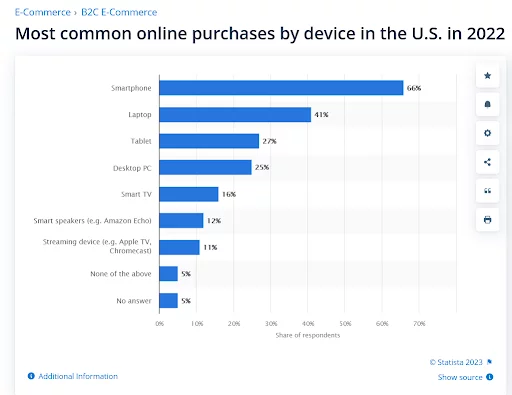
- Timing:
As the holiday season is packed with significant dates, promotions occur at various periods and last for different amounts. Your pre-Christmas sales may run for weeks, while your Black Friday deals will only be available for one day. You want to maximize sales and ensure your website runs smoothly because of a promotion.
- Customer Service:
The customer care department will likely be overwhelmed at the busiest times of the year. To that end, it’s essential to consider the buyer’s journey while formulating new seasonal sales strategies. What parts of your site did visitors require the most assistance with? Where did your clients give up making a purchase, and why?
Understanding this information will provide the jumpstart your eCommerce campaigns need to generate happy customers and a positive return on investment.
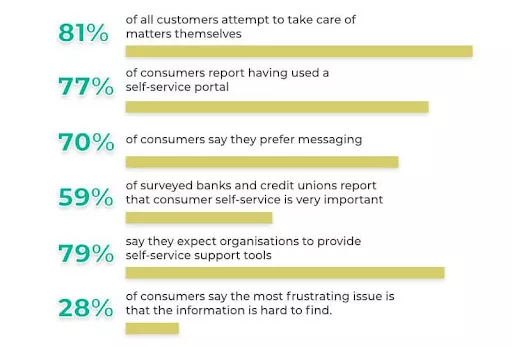
Conclusion
Every facet of the online purchasing experience matters significantly in establishing credibility and generating revenue, from emphasizing the user experience to protecting consumers’ data.
Online retailers must keep up with the latest innovations without losing sight of the fundamentals that have brought them success in the past. Businesses may attract and retain customers in a competitive market by putting the consumer first and offering a pleasant and stress-free purchasing experience.
Remember that the world of e-commerce is constantly changing, so it’s essential to remain flexible. The digital marketplace is continually evolving, but by adopting these best practices into your company plan, you can ensure that you are always one step ahead of the competition.
Best of luck with the sale!



